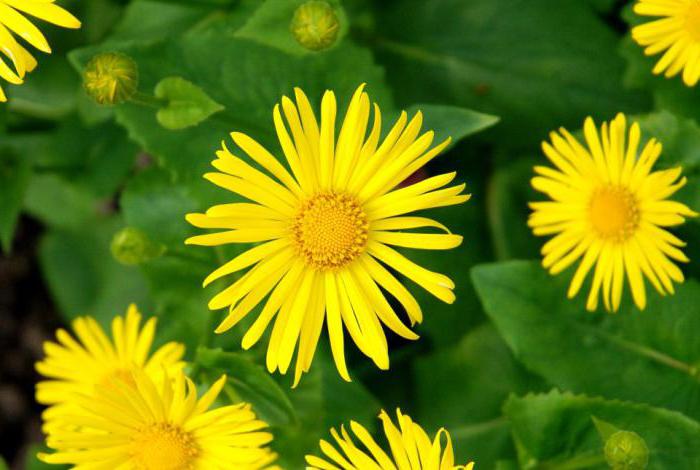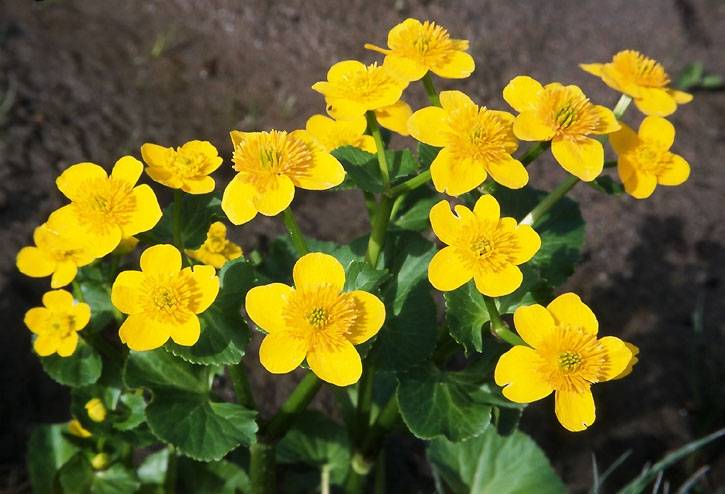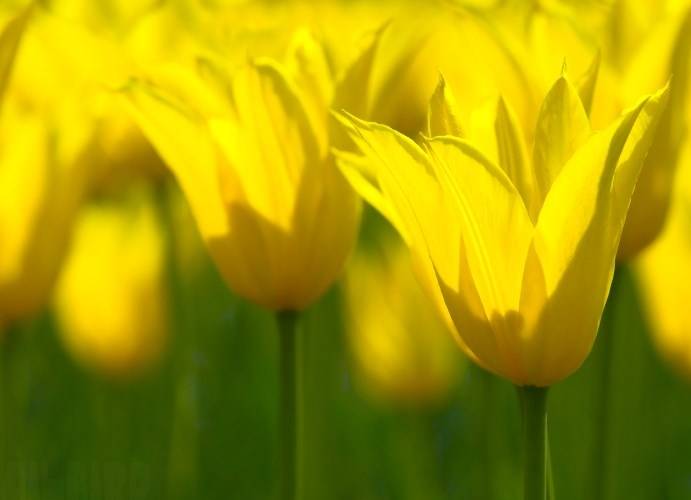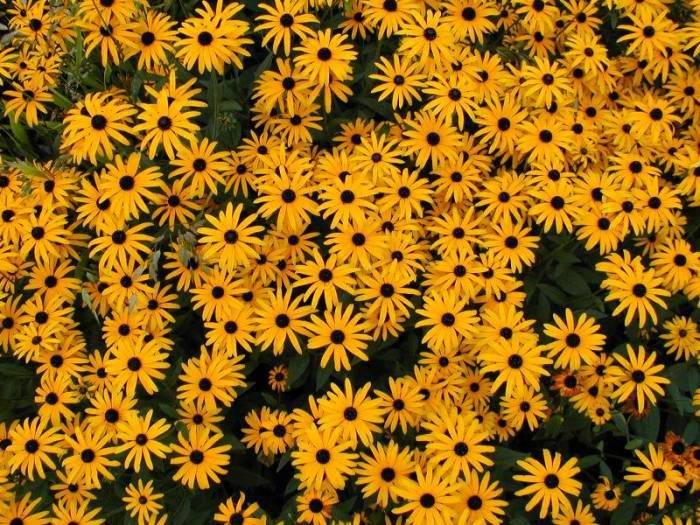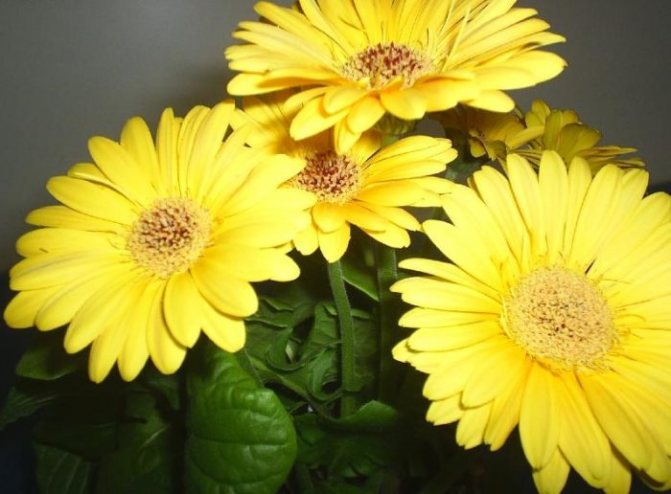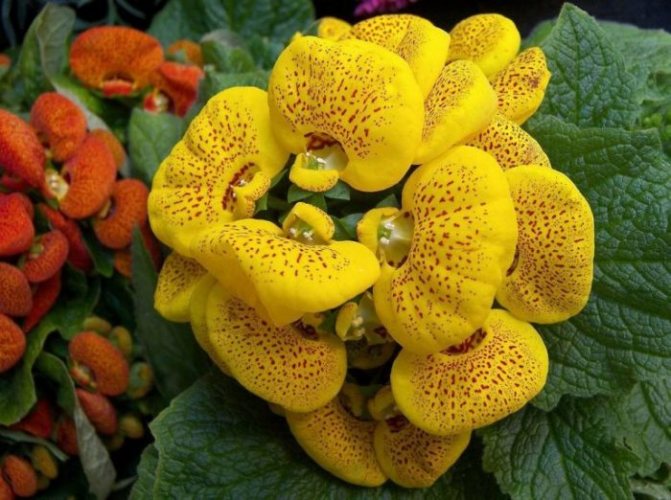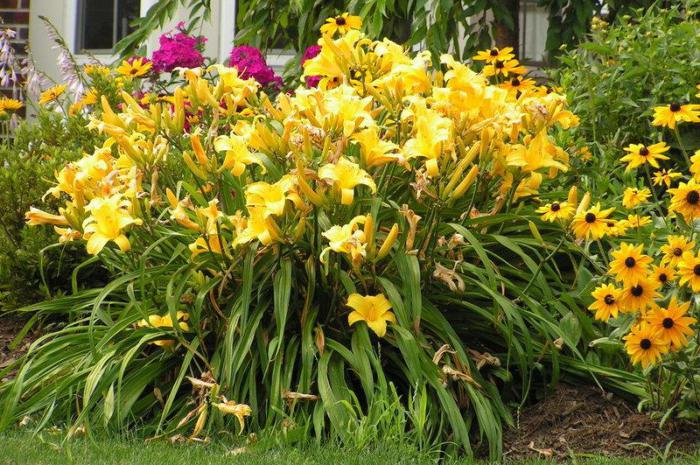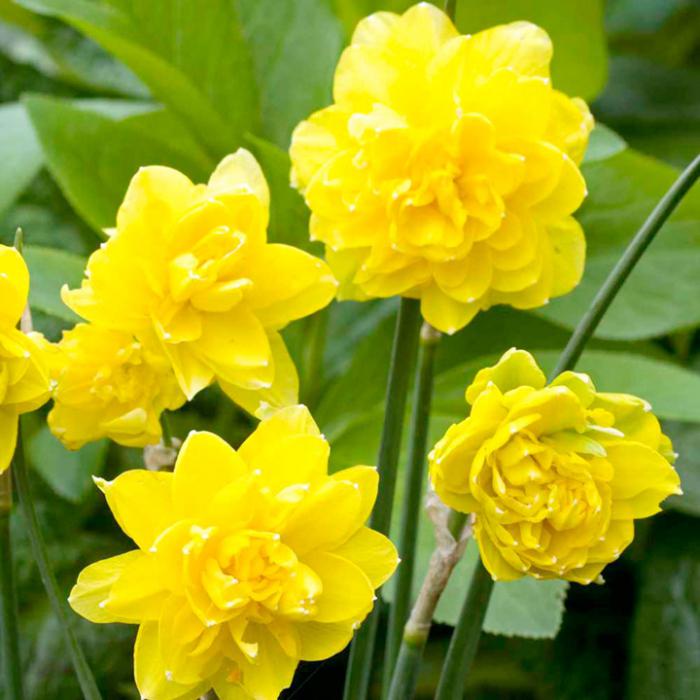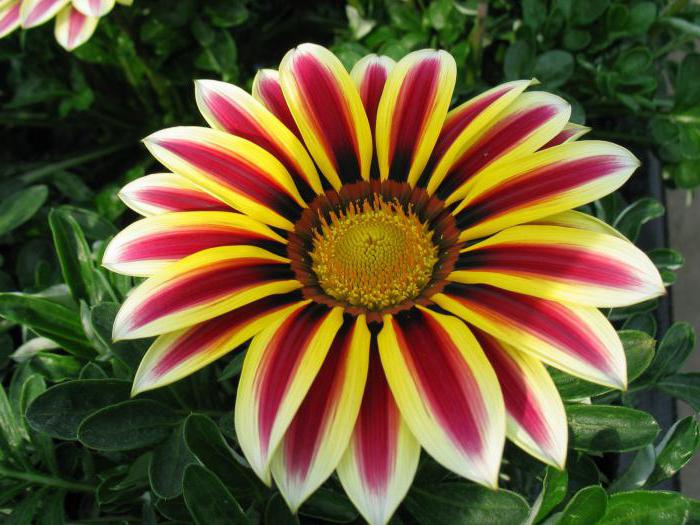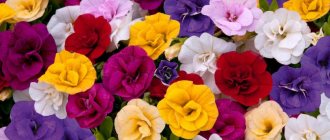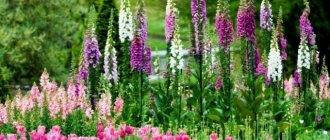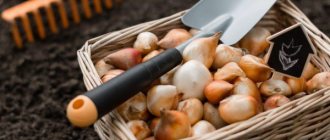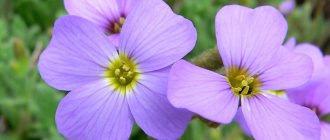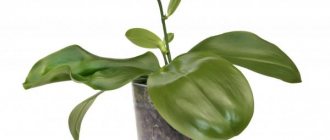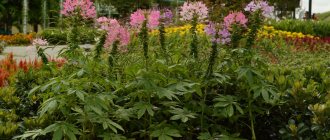The yellows are out of luck. It occurred to someone that they symbolized separation, betrayal, the cliché was picked up by representatives of mass culture and promoted. This is how a stereotype arose that can be safely attributed to the category "all men are bastards" or "all blondes are stupid."
Where did these prejudices come from and is yellow in bouquets so dangerous? Let's debunk myths.
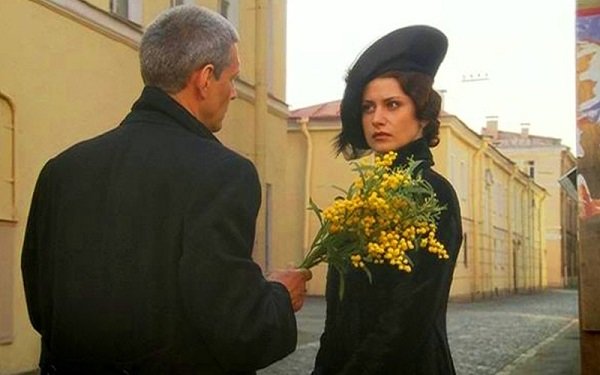
"Disturbing yellow flowers" did not prevent the Master from falling in love with Margarita at first sight
What do these flowers look like?
Chamomile and most plants similar to them belong to the Aster family. Its representatives are easy to identify by:
- herbaceous stem;
- elongated petals;
- a basket framed with petals;
- weak aroma.
The most common type of chamomile is pharmacy... In flower beds, most often there is a large or decorative one. Asters, some varieties of chrysanthemums and gatsanias also have large inflorescences.
Multicolored daisies
The first sign by which you can distinguish them is the color of the petals. In chamomile, pharmaceutical or decorative, they are white. There are similar flowers with different shades of petals..
Blue color indicates that Asters or Cineraria have grown... In the latter, the petals are sometimes colored half white, which creates a pleasant decorative effect.
Colored daisies, which have petals in different colors and shades, called Anemone Blenda or Anemone Crown... Echinacea varieties have a similar color.
Doronicum (goat) is most often confused with yellow... You can also find Pyrethrum with lemon-colored petals, this variety is very similar to Chrysanthemum due to the double petals and the shape of a small shrub.
Purple and lilac
Asters, Osteospermum with purple petals look very beautiful in borders and bouquets... This also includes lilac daisies, the brightness and type of shades varies depending on the variety of a particular type of plant.
Salsify
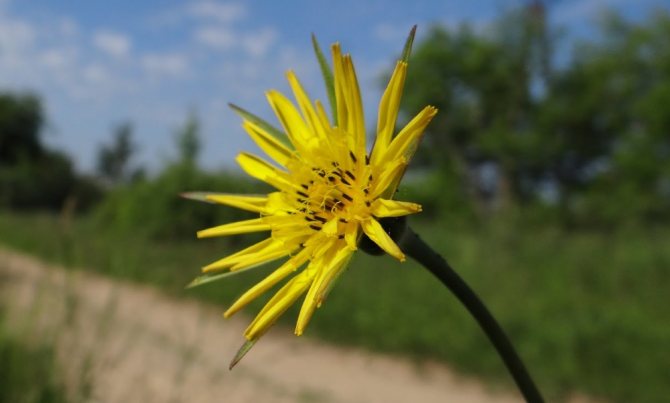

It is called a distant relative of the dandelion because it looks like its relative, only taller. These plants have flowers of the same shape and the same yellow color. As the people call it "Big Dandelions".
Goatbeard is a plant of the Aster family with high stems of almost a meter in height, narrow long leaves, a significant number of inflorescences and shallow roots.
These flowers are very fond of herbivores. They are also useful for people who successfully use them in traditional medicine. Goatbeard roots are edible (boiled as a vegetable for making salads, or dried, fried and used as a coffee substitute). And its down is used for stuffing pillows and mattresses.
Common chamomile-like flowers
Despite the similarity, each flower is unique. They differ not only in appearance, but also in life expectancy., susceptibility to disease, unique medicinal or simply beneficial properties. What are the names of such flowers and how do they look?
Anacyclus or anacillus is a perennial plant with creeping stems and large flowers. Used to decorate alpine slides, as it is low (up to 5 cm)... The buds are colored dark pink, but the petals are white inside.
Gelikhrizum daisy-flowered
Gelikhrizum daisy-flowered - a perennial plant in the form of a low (up to 10 cm) and a wide bush (up to 50 cm)... The leaves and stems are gray, the petals are tightly packed together, white.
Doronicum or goat - a perennial plant with bright yellow petals and pith, grows from 0.3 to 1 m in height... The leaves are triangular and deep green.
Nivyanik is a perennial plant that forms a bush with a height of 0.3-0.8 m ... The blooms are large, with dense oblong white petals, the core is bright yellow. There is only one corolla on one stem, unlike chamomile.
Calendula or marigold is an annual herb 0.5-0.6 m high ... petals are orange or rich yellow. The leaves are green in the form of an elongated oval.
Daisy
Daisy - a perennial plant is most often found in ornamental crops. The flowers are stuffed, the petals are pink, white, lilac, the heart is pale yellow. A neat bush grows up to 20 cm tall... The leaves are oblong, located at the base of the stem.
Pyrethrum or Dolmatian, Persian chamomile is a perennial herb with a height of 0.4-0.6 m ... The flowers are large, but there are varieties with small and stuffed corollas. The color of the petals ranges from white to burgundy.
Arctotis is an annual or perennial plant with a height of 0.20-0.3 m. On a bare stem, inflorescences with a diameter of 5-10 cm, depending on the variety... The color of the petals is white or pale yellow. Light silvery bloom on dark green leaves.
Gatsania or gazania (African chamomile) - perennial or annual plant. Grows up to 30 cm in height, inflorescence with a diameter of 5-9 cm ... The color of the petals is different, but the red and pink varieties are popular. The leaves are dark green, curly.
Gerbera is a perennial plant. Bare stems 0.4-0.6 cm high, tough... The rosette has long petals (up to 0.35 m) and dense, with a diameter of 0.05-0.15 m. Gerberas can be of any color, with the exception of blue.
Venidium grows up to 0.8 m. The petals are elongated with pointed ends, the rosette is not stuffed. Venidium comes in pink, white, orange and yellow.... The core is brown or burgundy.
Kosmeya is an annual or perennial 50-150 cm high. The stems are tender, the leaves are thin, resembling the shape of a pharmaceutical chamomile or dill... The petals are long, painted in one or two colors (border effect), they are white, red, pink or purple. Inflorescence up to 12 cm in diameter.
Coreopsis is a perennial or annual plant. Bush height 0.5-0.9 m, thin leaves... Flowers of rich shades of yellow, there are specimens with a burgundy base of the petals.
Osteospermum
Osteospermum is a perennial plant, but cultivars are grown as annuals. Grows in the form of a bush 0.25-1 m high, inflorescence diameter 4-10 cm ... The color of the petals is white, various shades of red, purple.
Sunflower
Decorative sunflowers differ significantly from their counterparts. Depending on the variety, they are:
- Miniature.
- With double and dense blooms.
- Multi-colored.
Read also: How to grow bell pepper seedlings in the Urals: useful tips from experienced agronomists
Some of them, especially the tuberous sunflower, look like a giant yellow chamomile. Such plants grow up to 3 m in height., and the inflorescences are 3-5 cm in diameter.
Jerusalem artichoke
Jerusalem artichoke or earthen pear is a perennial plant with stems 0.50-4.0 m high. Blossoms are yellow, their diameter is up to 10 cm .
Ursinia is an annual or perennial with a height of 30-60 cm. The flowers are bright yellow, white or purple, glossy, up to 5-6 cm in diameter ... Ursinia leaves are dark green in color.
Chrysanthemum
Chrysanthemum is a perennial with many flowers... Most often, Korean chrysanthemum is found with thin rigid stems, openwork light green leaves and flowers 2-5 cm in diameter. Chrysanthemum petals can be of a wide variety of shades and scales: from white to purple.
Echinacea - a perennial with medicinal properties... On stems with leaves, one flowering with a core protruding upward. Petals are pink or purple, oblong with pointed ends.
Erigeron is a perennial that grows up to 40 cm in height... The petals are elongated, rounded, color: white, pink, yellow, violet, purple. Inflorescence is 2-5 cm in diameter.
Chives


Also applies to abundant and flowering plants.
True, the flowering period is short, no more than 20 days. The flowers of this beautiful and useful plant are predominantly purple in color, but they are pink and white. The latter are extremely rare and differ in that at sunset they shimmer with mother-of-pearl, and in the moonlight they are cast in silver.
Thin sharp leaves of shniyit-onion predominantly look against the background of other plants. And if you plant it next to other varieties of decorative onions, then a good composition will be created.
But this plant differs not only in its decorative effect. When it grows, you can safely eat it. And his presence in the beds will perfectly protect carrots from carrot flies, and fruit and ornamental trees and shrubs from fungal infections.
Chrysanthemums
Important! Chrysanthemums love moisture very much. But they need to be watered carefully, since excess water is fraught with root rot and the death of the flower.
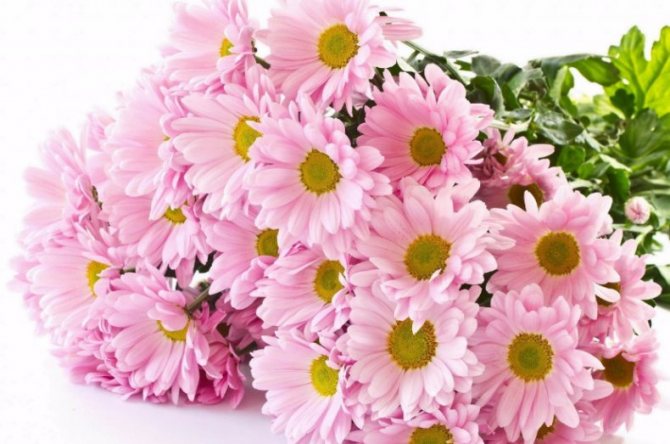

Important! All asters are very sensitive to fusarium and blackleg. To prevent these fungal diseases from spoiling your flower bed, disinfect the sowing with a 1% solution of potassium permanganate and sprinkle the soil around the flowers with river sand.
Important! For abundant flowering of all Asteraceae, remove the discolored buds in time.
Did you know? "Erigeron" in translation from Greek means "early old man". The name is associated with the imminent ripening of seed pods, decorated with a gray tuft.
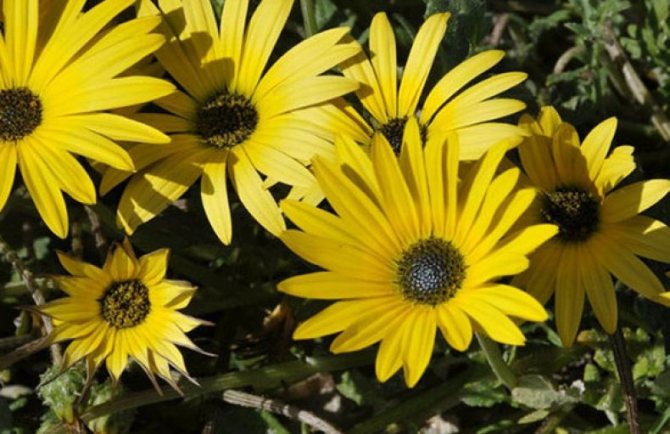

In some hybrids, the petals are arranged in several rows, in others they are attracted by intricate bends and waviness. The average diameter of a Venidium flower reaches 12 cm, and in some breeding creations - 15 cm.
Coreopsis
Another yellow chamomile-like flower is coreopsis. It is tall and branched, usually up to a meter in height. Each shoot blooms a bright golden flower up to 7 cm in size. But this plant has several varieties, among which there are coreopsis with double, larger inflorescences. And there are also small representatives, where the bushes grow up to 60 cm and give small flowers (3 cm). It blooms in mid-summer and decorates flower beds until September. It is the coreopsis that adorn most of the ridges, mixborders and front gardens.
Numerous aster family
The genus "chamomile" belongs to the botany aster family. There are 5 types of flower structure in this family. Plants with ligulate marginal and tubular inner flowers can be called chamomile-like.
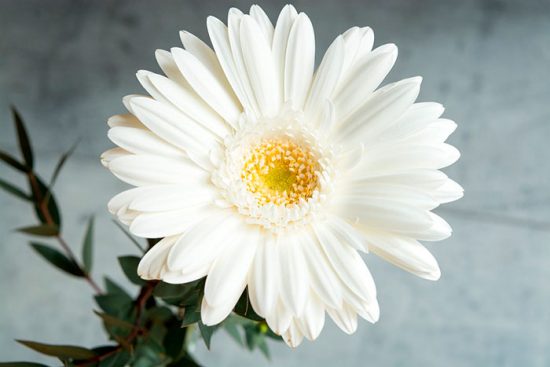

- Arctotis large-flowered (bear's ear). Inflorescences are large, up to 10 cm. Petals are silvery-white, the reverse side is bluish. It is rarely found in flower beds, although it has been cultivated for more than 200 years. At night and before the rain, the flowers close. There are yellow, orange, pink, purple arctotis species.
- Anacyclus (saliva). Ground cover plant, forms dense clumps. Possesses medicinal properties. Blooms from July to August.
Read also: Features of growing action: rules of planting and care
Attention! It is easy to take for a simple chamomile umbilical field, feverfew, three-ribbed - these are meadow flowers, most of them grow like weeds in the fields.
Thistle varifolia


A common meadow plant that cannot be classified as a weed in any way. This comparison came to him for the resemblance of a flower basket (the same spherical with tubular bisexual flowers in it of lilac or purple color) with an ordinary thistle's basket.The only difference is that the variegated thistle has absolutely no thorniness.
There is one more feature of this plant - its stem is straight and only sometimes bifurcates at the top. Leaves are present only on the lower and middle part of it, and at the top there is a flower basket.
The plant is distinguished by its usefulness. Bees collect nectar in his baskets. And herbalists are used for certain types of treatment.
Exotic "relatives"
African chamomile or osteospermum is a rare flower in our country. Another well-known name is Cape daisy. Petals are not only white, but also blue, purple, lilac, red, yellow, orange. The dimensions of the basket are 3–8 cm. Interesting hybrids with unusual petal shapes, for example, resembling a spoon (spoon-like osteospermum), have been bred. Most similar to chamomile:
- Barberiae;
- Eklon;
- osteospermum is noticeable.
The bushes bloom and branch profusely. The plant does not lose its attractiveness even in rainy weather. To make friends with African chamomile, it is enough to prepare a sunny area with well-drained, not too fertile soil. The plant is thermophilic, at -10 ° C it will die in the open field. For the winter, they are transplanted and kept in cool rooms (+ 5 ... + 10 ° C).


Gazania (gatsania) is another African "guest". A low-growing plant (30 cm) with red, orange, pink or yellow petals. The leaves are textured, dark green or with a grayish bloom. Grown as an annual and perennial. With proper agricultural technology and in favorable conditions of gating, it blooms all summer. The plant practically does not get sick, it can be affected by insects: ticks and aphids. For the winter, the bushes are dug up and kept in a well-lit, cool place. Watering is rare.
Homeland of Ursinia South Africa. Of the cultivated species, not all are suitable for the climate of the Middle zone, the dill ursinia is most adapted to it. The plant is not left for wintering, it is grown as an annual. Popular varieties:
For the abundant flowering of ursinia, 5 hours of sunshine is needed.


Christoph's Bow
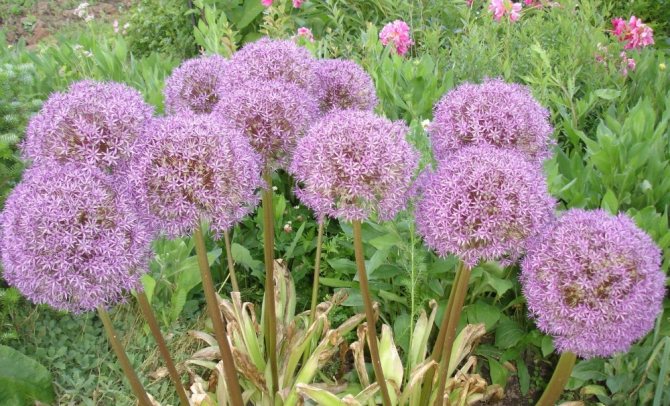

Differs in its incredible decorativeness. Its 30-centimeter loose, spherical inflorescences with star-shaped flowers of enchanting beauty look like purple dandelions. It is because of them that this plant is also called the "Star of Persia". And after they form seeds, gardeners call them "porcupines" for their unusual shape.
The plant blooms in the first summer month and pleases with its beauty for 1.5 months.
The plant is unpretentious in cultivation, it also differs in decorative leaves. Therefore, he always has a place in the foreground of the flower garden. Christophe's bow is a worthy decoration of any personal plot or flower garden.
Yellow "daisies"
More than 300 varieties of garden chamomile have been bred. For example, an exceptional one: yellow-lemon "pom-poms" with green carved foliage on the stems. Many famous yellow daisies, from a botanical point of view, are not:
- Doronicum (goat). In nature, widespread in Europe, North. America, Asia Minor. Depending on the species, its height ranges from 25–140 cm. In culture, it is unpretentious, grows rapidly and blooms profusely until late autumn. Frost-resistant perennial.
- Anthemis (dyeing navel). Saturated yellow flowers 5 cm in diameter. Stunted (no higher than 30 cm), well-branched, pubescent gray-green leaves. Self-seeding annual.
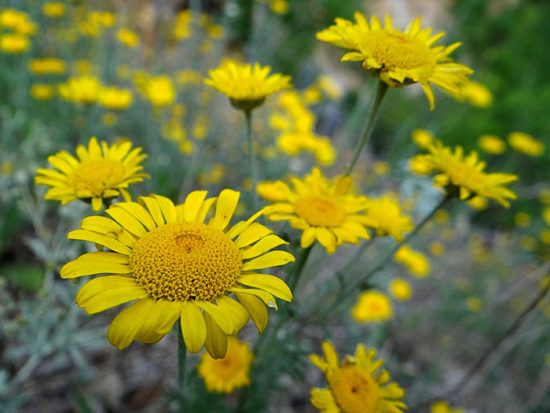

- Careopsis. There are about 30 plant species in culture. The color of the petals is yellow, yellow-orange. Bred rose variety Heavenly Gates. Well worth cutting, used to decorate flower beds of any type, borders. Drought-resistant and frost-resistant plant.
Similar to chamomile with marginal petals of "sunny" color: Jerusalem artichoke, sunflower, calendula, rudbeckia.
Field sow thistle
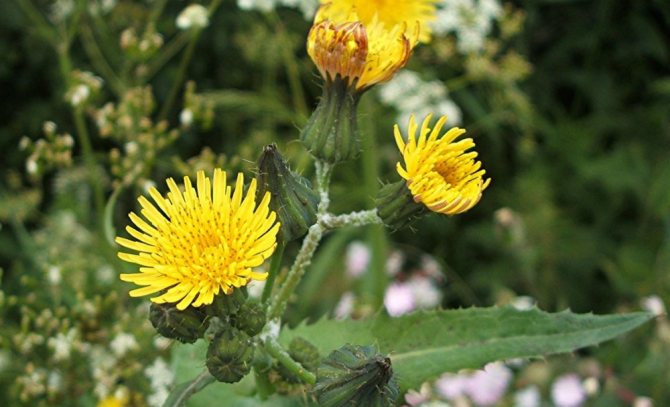

It is widely distributed in meadows and vegetable gardens, has leaves similar to dandelion, only thorny.The yellow flower baskets formed in autumn, only of a smaller size, differ in similarity. The field thistle has one more similarity with dandelion - milky juice appears on the break of the plucked stalk.
A distinctive feature of this weed is a powerful taproot that can penetrate to great depths. And the lateral processes from it, which lie closer to the surface, differ in that new plants can form on them.
Because of the thorniness of the thistle, it is reluctant to be eaten by animals. And people, waging a constant struggle with its destructive growth for cultivated plants, do not often use its medicinal properties.
White and colored "daisies"
Not all chrysanthemums can be confused with chamomile. Perhaps the most similar varieties are:
- arctic white;
- autumn (late);
- Indian (golden yellow petals);
- Bacardi (classic "chamomile" color combination).
Small multi-colored corollas are cineraria. At the base, the petals can be white, and the edges are colored. The height of the stems is from 25 to 70 cm. There are also monochromatic cineraria, for example, snow-white hybrid varieties with a red center.
Anemone Blanda and hybrid Coronal - resemble chamomile. Representatives of the bulbous family love partial shade and well-drained fertile soil. Anemone petals are delicate, sensitive to winds and bad weather. There are about 160 species of anemone in total.
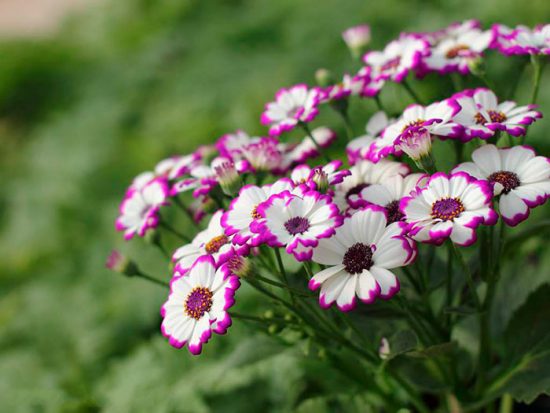

There are some similarities with chamomile in the immortelle, especially in gelichrizum. Ground cover perennial about half a meter high with snow-white petals and a yellow center. In August, when the flowers dry up, the immortelle does not lose its decorative effect.
Multicolored daisies with a yellow center - why not daisies? Unpretentious annuals are bred themselves from seeds. Two-year-old daisy to preserve the variety, propagated by cuttings.
It is difficult to list all the plants that look like chamomile. Different in color, size and even growing conditions - these "basket" inflorescences are united by a common "chamomile" charm.
Autumn kulbaba
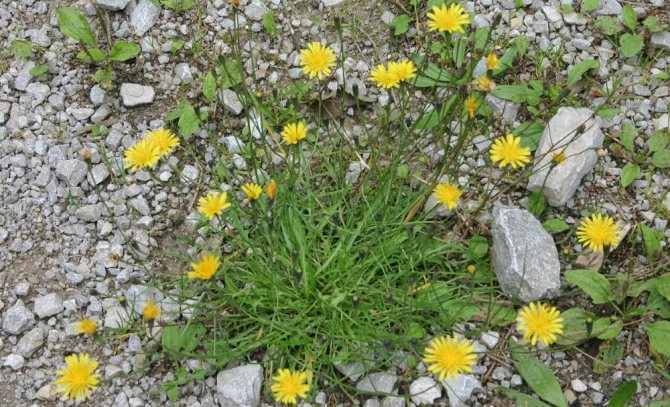

A wildflower with such an unusual name can be easily confused with a dandelion. After all, the difference between these weeds is only that the flowers of the autumn culbaba are smaller.
These plants can be distinguished by the appearance of the stems. In the dandelion, they are also peduncles, and in the kulbaba, the stem is real, branching in the upper part of it. It is on these branches that single flower baskets are formed.
The kulbaba blooms from the first summer month to late autumn (the dandelion has a short flowering period). Otherwise, these meadow representatives of the flora are very similar to each other.
Garden daisies and flowers similar to them
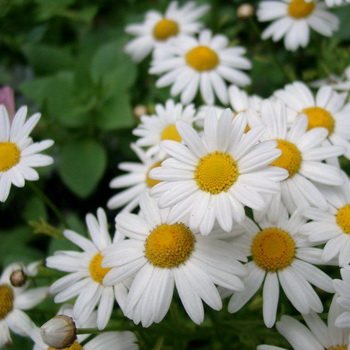

There are many flowers similar to chamomile. Among the most popular are rudbeckia, echinacea, erigeron (small petal), buzulnik and, of course, everyone's favorite asters. All these flowers, as well as chamomile proper, are irreplaceable in the landscape design of the garden. Especially if a rock garden or rockery is laid out on your site. The apparent simplicity of these plants is favorably set off by ferns, conifers and other perennials.
A native Russian flower, chamomile is appropriate not only in the field, but also in the garden. Of course, we are not talking about a pharmacy chamomile with small flowers, but about its larger sisters. This includes plants with chamomile-like flowers. All of them, like chamomile, belong to the Asteraceae family. These daisy-like plants, although they differ in the names of species and even genera, have much in common in their "habits".
Read also: Description and photos of Miltonia orchid species
On this page you will find out what the flowers that look like multi-colored daisies are called and what they look like.
Common mother and stepmother
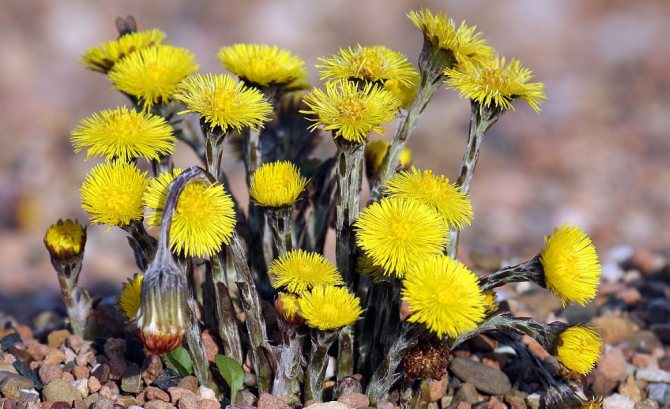

It is also often mistaken for dandelions because of the identical basket inflorescences, which, when they bloom, transform into fluffy parachute balls. But this is a smaller plant that blooms in early spring.Flowers appear on it first, and then leaves (in dandelions, on the contrary). These plants also differ in pedicels, which in coltsfoot are scaly.
The plant got its name from the property of its leaves on the upper side to be smooth and emit cold, like a stepmother, and from the bottom - to radiate warmth, softness and velvety, like a mother's hands.
The leaves of this spring primrose are a good cough suppressant. And a blooming mother-and-stepmother is a wonderful early honey plant.
What are the names of flowers that look like multi-colored daisies
Garden flowers such as perennial asters are very similar to daisies.
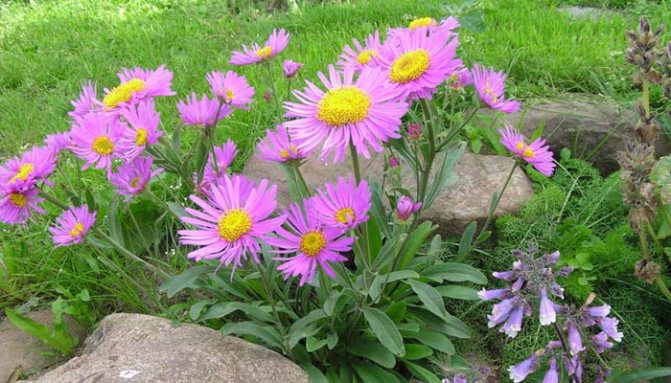

For example, alpine aster (Asfer alpinus). Its flowers are painted in pink, blue, lilac and white tones, the latter are poured daisies, only with a sprout of only 25 cm.
Alpine aster blooms in May, much earlier than daisies, but just as magnificently and for quite a long time.
But other types of asters bloom only in autumn, which can be credited to them, because at this time there are not enough flowers.
These are asters New England and new belgian (A. nobo-angliae, A. novo-belgii). These are already tall, and sometimes very tall, in human height, bushes, powerful, fluffy. Don't ask me how to tell one from the other. There are a lot of varieties, they differ in terms of flowering and color of flowers.
New England and New Belgian asters, perhaps, live longer than others. Their bushes are getting thicker and more voluminous from year to year. Only the middle of them can thin out a little.
These photos show flowers that look like daisies:
What other flowers are similar to daisies, and what are they called? Yellow daisies are, of course, buzulniks. Their "flowers" are collected in a variety of shields, panicles or brushes that adorn the garden throughout the second half of the summer. Perhaps they stand out from the ranks of daisies in that they are more hygrophilous. Want a buzulnik? Buy any! Species are extremely unpretentious, varietal ones with a purple leaf, too, only the spotted varieties are still worth looking at.
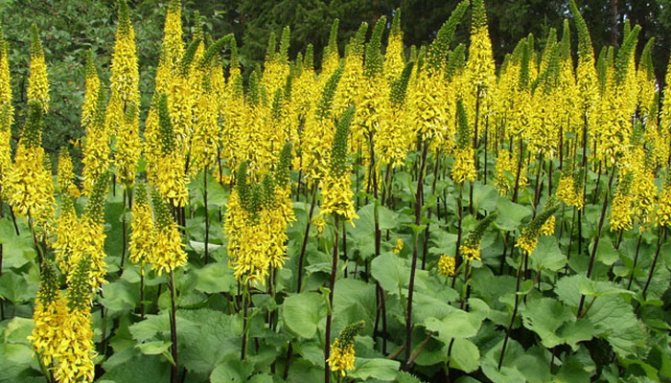

Most grow in a dense bush, but there are also aggressors - buzulnik siberian (Ligularia sibirica).
Rudbeckia also look like yellow daisies. The most important thing here is the size of the "flower" - it is impressive for a rudbeck.
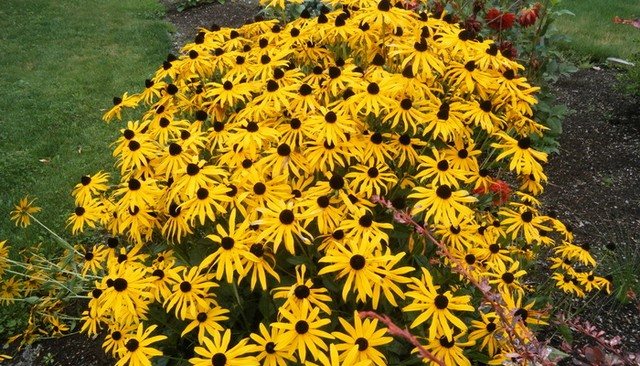

Mainly grown rudbeckia brilliant (Rudbeckia fulgida) and yellow-brown hybrid varieties. Rudbeckia as a whole are short-lived, it is worth monitoring their periodic reseeding and division.
What other flowers look like daisies are described below.
Chistyak kalyuzhnitsy
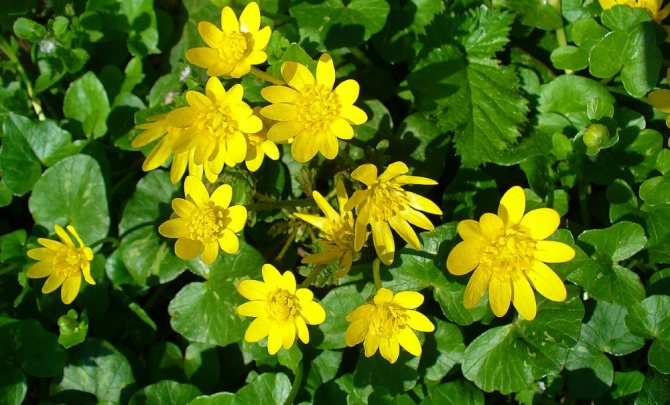

A bright representative of low-growing perennials. Its height is only 10-18 cm. Its tuberous root system contains starch, which contributes to its earlier flowering. Its heart-shaped leaves are without axillary nodules and are collected in a basal rosette. Due to the weak development of the stems, the peduncles of the kalyuzhny-leaved cleaver are predominantly basal. Chistyak flowers are distinguished by a whitish-yellow color.
Chistyak kalyuzhnitelistny pleases with its flowering usually in early spring. The plant got its first word in the name because of its striking clean appearance, which is given to it by shiny, as if varnished, leaves and flower petals.
What other flowers are similar to garden daisies?
Of the multi-colored flowers that look like chamomile, pink echinacea can be distinguished. Why pink though?
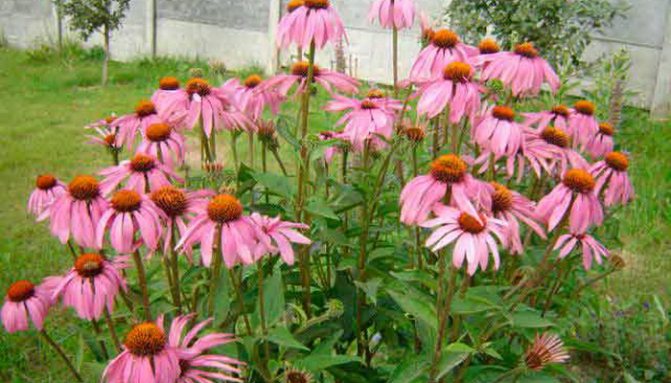

This is in the species echinacea purpurea (Echinacea purpurea) dark pink flowers.
And her varieties have no shades! White, yellow, greenish, orange, pale pink, almost crimson! And sometimes thick hemispherical centers, like pompons. Echinacea grows rather slowly, but they live longer than chamomile. But it is desirable to divide them in three years.
Well, for a snack, tiny daisies for a rock garden. These are mountain small-petals forming dense clumps pressed to the ground. Their place, of course, is on a hill, among the pebbles, in the same rocky dump.There are many hummocks, many can be recommended, for example, Erigeron scopulinus.
It is better to divide and transplant chamomile-like flowers in the spring, as soon as the snow has melted. Then they will not even notice the execution and will bloom in the summer, as if nothing had happened. Chamomile can also be propagated by seeds, it is easier than easy: you throw the seeds into the ground and they germinate. Seedlings are developing briskly. When collecting your seeds, keep in mind that Compositae have a high percentage of defective seeds.
These are such unpretentious plants that it is difficult to notice pests and diseases on them. It happens that slugs spoil the foliage, it happens that in a wet year, the chamomile will partially rot. But usually these are trifles that are not harmful to plants.
Look at a photo of flowers similar to daisies, the names of which are given above:
Pupavka chalk


A low-growing yellow-flowered plant that can vegetate for many years. Its flowering begins in June and ends in September. It grows mainly in the foothills in stony and chalk areas.
The navel differs mainly in its decorative effect. On the farm, it is used as a coloring agent, as well as to protect plants from pests.
Pupavka belongs to the endangered flora, as it requires a special habitat.
Erigeron
Some plant lovers believe that erigeron is a wild flower that looks like a chamomile. His second name is small-petaled. It can indeed occur in the wild, as there are approximately 390 varieties of it! It is a perennial, although some subspecies grow for one season. It grows from 40 centimeters to a meter. In our area, "beautiful small-petal" and varieties derived from it are more common. On average, the bush reaches 60 cm, and its delicate lilac and white petals with yellow hearts are 4 cm. Flowering begins in early summer and continues until autumn.
Probable difficulties in garden cultivation of navel


You can delight flower growers with the fact that antemis is practically not affected by harmful insects and diseases, since all its parts are saturated with essential oils and have a strong unpleasant odor repelling pests. However, this does not apply to slugs, who like the delicate leaves of the golden beetle. Such gastropod pests prefer to settle in lowlands, where the soil is moist and moist, and dense vegetation prevails. Slimes with the arrival of spring begin to eat up young shoots and leaves almost to the root, and besides, flowers of field saffron bushes.
Only their traces will be recognized as a sign of the presence of such pests, since on ordinary days slugs choose to eat in the evening and at night, and during the day they hide under lumps of soil or foliage, boards and in other secluded places in the garden. Traces of the presence of gastropods are strips of silvery mucus, which they leave on the leaves, stems of artemis, plant trunks or soil. If the weather is hot and dry for a long time, then most of the slugs will inevitably die.
But if the weather is not the case, then gastropod pests multiply quite quickly and can jeopardize garden and flower plantations. There are many methods of control, from collecting slugs by hand, to treating them with chemicals (for example, metaldehydes, such as Meta-Thunder). You can set traps for slugs. Laying out pieces of boards or roofing material over the site, where the pests will hide during the day, there they can be caught and destroyed. Also, for the destruction of slugs on the plantings of the navel, spraying with a solution of ammonium nitrate (in 1.5%) or copper or iron sulfate (about 1%) can be carried out.
Another problem will be planting antemis bushes in places where moisture can stagnate from melting snow or during periods of prolonged precipitation. This can even lead to the complete destruction of such plantations.
Yellow perennials blooming in autumn
After the end of summer and harvesting in the country, I want to relax and admire the beauty of the flower bed. All autumn will bloom, and sometimes before the first snow such flowers:
- Chrysanthemums - stems from 20 cm to 70 cm, terry, spherical, large-flowered, medium-flowered, small-flowered, branch varieties: "Mei Shusmin", "Eleonora", "Lillipop", "Multiflora", "Altyn-Ai", "Anastasia", Baltika, Broadway;
- Aster - stem height from 10 cm to 75 cm, flowers from simple to double, needle-like, spherical;
- Marigolds - plant height from 15 cm to 90 cm, flowers are simple and double, yellow with splashes of brown and red: "Vilmorin", "Guildball", "Golden Ring";


- Gladiolus - stem height from 60 cm to 180 cm, flowers are collected on one stem, by the type of ear: "Golden Ten", "Margarita", "Goddess of Fortune";
- Dahlias - stems from 60 cm to 160 cm, single-row, double, spherical, anemic: "Boogie Woogie", "Fanny Face", "Sunny Boy";
- Snapdragon - stem height from 15 to 100 cm, flowers are arranged one after another on the stem, bloom from bottom to top;
- Major (Tsiniya) - height from 15 cm to 100 cm. Terry, pom-pom, ball-like: "Envi", "Hagi".
By choosing just one variety from this list, you can create an extraordinary and most original flower bed.
Before creating the "Sunny Flower Garden", it is important to carry out preparatory work on the soil so that the plants have a constant supply of fertilizers and drain the soil well.
Features of planting and crop care
Yellow chamomile is a rather unpretentious flower, it can be sown directly into the ground with seeds. In spring, sowing can be carried out from May, in autumn - in October. However, for reassurance for the first time, you can grow seedlings in this way:
- in February-March, seeds are sown in the soil (universal, with the addition of sand, peat);
- monitor the lighting and regular watering of seedlings;
- when three leaves appear, you need to make a pick;
- in May, young flowers should have five leaves.
Field chamomile
Chamomile should be planted in places well-lit by the sun. The soil suitable for this plant should be slightly alkaline, loose. Make 20 cm depressions in the ground for each plant, then plant it by transshipment. Be sure to water.
Two weeks after planting, chamomile can be fed with mineral fertilizers. Further care is simple: watering, removing weeds, loosening the soil. Yellow chamomile is frost-resistant, but this is a property of mature plants. And the young for the first two years for the winter it is better to cover with additional dry grass, foliage.
Chamomile can be propagated by cuttings and rhizomes.
Important! It is necessary to separate mature bushes 5 years after planting so that the flowers do not become smaller in size. By dividing it into small bushes, the plant rejuvenates.
The division of the bush into several is carried out in the fall after flowering. A large bush is divided into equal parts along with the root. Then new bushes are transplanted into the prepared soil, top dressing is applied. Yellow chamomile can be propagated by cuttings, although this is a less common method.
Extra attention to the plant will benefit:
- timely removal of wilted flowers;
- regular watering and weeding;
- soil mulching is encouraged: in summer in a thin layer, in winter up to 20 cm.
Mulching protects flowers from overgrowth of weeds and drying out of the soil, retains moisture.
After the end of the growing season, the chamomile is cut off (all the ground part).
In order for the flowers to bloom for a long time and profusely, you need to feed them periodically:
- at the beginning of flowering, nitrophoska fertilizer is suitable;
- after flowering immediately with potassium and superphosphate;
- it is recommended to introduce ash into the soil, in the fall from pests.
Houseplants with yellow inflorescences
- Clivia - has rich green leaves that form a chic rosette. Flowering consists of 10-20 yellow flowers. This is a light-loving plant that does not tolerate high temperatures. The best temperature in summer is 23-25 ° C, and in winter it is around 14 ° C.
- Pachistakhis - outwardly resembles a fireworks display with flowers in the form of candles, which can be seen in the photo. She is afraid of drafts and likes cool, well-ventilated rooms. Pachistachis needs to provide diffused light and a sufficient distance from heating appliances. It is recommended to water with settled water, while avoiding overflow. For feeding, the usual fertilizer intended for flowering plants is often used.
- Calathea saffron - grows well in darkened rooms and on poorly lit windowsills. Able to please with luxurious flowers and special leaves, the surface of which has a metallic sheen.
- Guzmania is an evergreen plant, the height of which can reach 40 cm. It has a colorful rosette with narrow and long leaves, and a beautiful yellow inflorescence grows from its center.
- Kalanchoe - delights with small flowers that cover almost the entire bush. Prefers deciduous soil with admixtures of peat, sand and humus. In the spring and in the first half of summer, it requires fertilizing with fertilizers for succulents.
- Jacobinia (shadow justice) - releases whole inflorescences, reminiscent of fountains of bright splashes. It can bloom throughout the year, besides, it is unpretentious in everyday care. For a plant to thrive, it needs plenty of sunshine, as well as coolness at night and warmth during daytime.
Arctotis
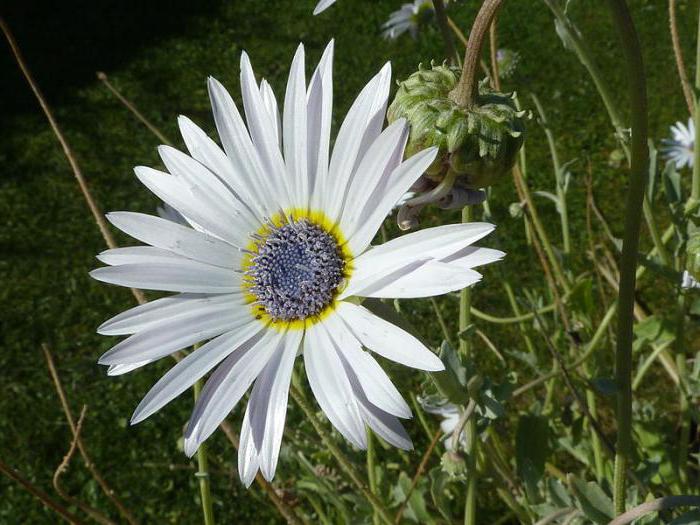

Arctotis is a large chamomile-like flower. But there are differences in the colors. In total, you can find two varieties of arctotis - stochasol and hybrid. The plant is branched and grows up to 120 cm. But you can find 20 cm specimens. The diameter of the inflorescences is 8 cm. The flowers themselves are bicolor. The petals are white, but at the base they can be of a completely different shade. The bred hybrid arctotis are red, pink, yellow, white, bronze. The flower opens only in the daytime in clear weather.
Buttercup anemone
This special plant does not propagate by seeds, but by buds located at the tips of the roots. The latter spread practically on the ground surface.
The anemone begins to develop in very early spring - even before the snow melts. It blooms from April to May. The buds are also pollinated by a rather specific method - by means of rainwater. The liquid accumulates in the flower cup and carries the pollen to the surface.
There is one drawback - fresh anemone is quite poisonous. However, this does not prevent you from using it for treatment:
- rheumatism;
- bruises and bruises;
- osteochondrosis;
- gout.
Planting seedlings in open ground
Special conditions and care when planting an osteospermum flower are not required. This plant is placed in the soil in the form of seedlings. Experts recommend the procedure to be performed at the end of May. Osteospermum prefers sunny locations, however, it can also be grown in shaded areas.
When planting seedlings, the distance between flowers should be observed. It should be no more than 25 and no less than 20 centimeters. It is noteworthy that the holes for planting should be of such depth that both the root system and the earthen lump fit there completely.
Seedlings are rolled out of the pot into a pre-prepared hole. After that, it is filled with nutritious soil mixture, which can be purchased at a specialized store or made on its own. It consists of humus, sod and leafy soil. In addition, fine sand is added to the substrate. All this should be mixed in one to one proportions. When the planting of the seedlings is completed, it needs to be watered with plenty of water. Osteospermum blooms in mid-June.
Coriopsis
Coriopsis can be found both in the wild and in most flower beds. This genus includes about 100 different species of annual and perennial plants. The height of their stems ranges from 20-30 to 100 cm, and the diameter of the inflorescences, respectively, reaches 3-8 cm. The leaves of Coriopsis are opposite, finger-split or pinnately dissected.


The combination of contrasting colors on the marginal flowers in Coriopsis is one of its best distinguishing features from chamomile.
Inflorescences in different species differ in the combination of shades and the shape of the marginal flowers. In some plants, they are not round or pointed, but jagged along the edge. In the middle of the inflorescence on the receptacle, as a rule, there are small tubular flowers of yellow or brown color. The ligulate flowers are yellow, orange, pink, lilac and red, as well as brown-yellow and red-yellow.
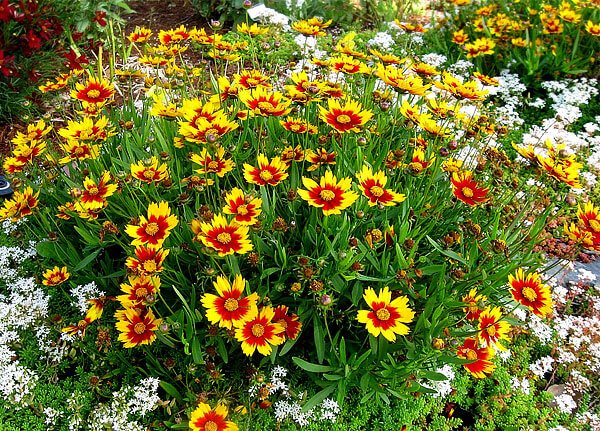

In addition to the "non-mushroom" color of the marginal flowers, long whole leaves of Coriopsis attract attention.
Among annual coriopsis, the most common type of dyeing, and among perennials, large-flowered. It is distinguished by high stems (up to 100 cm) and inflorescences with large ligulate flowers with jagged edges.
Coriopsis bloom from early July to autumn frosts. They love sunny places and moist soil. On hot days, it is advisable to water them, since due to a long drought, for example, coriopsis dye may stop blooming.
Plants propagate by seeds and cuttings. Annuals are sown in early spring in flower pots, and in April they are transplanted into open ground. Perennials can also be grown from seed, but they only begin to bloom profusely in the second year.
Reproduction methods
Each plant has its own breeding methods. Some of them are propagated by seeds, others by cuttings, and still others by division. So, calceolaria reproduces only by seeds. Flowering will occur 9-10 months after sowing.
For reproduction of Afelandra, 2 methods are used: sowing seeds and cuttings. Gerbera Jamson reproduces in 3 ways:
- Seeds. This method is the most time consuming and laborious.
- Cuttings. A stalk with a part of the rhizome is separated from the flower and planted in moist soil.
- By dividing the bush. The bush is divided into several parts, leaving points of growth on each of them, and planted in a new pot.


Alyssum - sea lobularia
The representative of the cruciferous family has been used as a garden culture not so long ago, but already has a wide range of fans among gardeners. It is famous not only for its presentable appearance and unpretentiousness in care, but for its marvelous honey aroma that spreads around the area during the flowering period, thereby complementing the fabulous image.
Alyssum is one of the highly branching low-growing plants. The height of the bushes varies in the range of 15-40 cm. Lignified shoots of plants have oblong obovate leaves. Yellow flowers, collected in small tight brushes, delight with a riot of colors from early May to mid-June.
The perennial is used both as a balcony decoration and as a border culture. Its main advantage is the ability to grow in almost any environment and easily tolerate drought and prolonged drops in temperature.
Flowers of yellow color have a variety called "Gold Placers". The abundantly flowering perennial quickly grows green mass and develops the territory, easily covering voids in the flower garden, defects in the soil and unsightly areas of the garden.
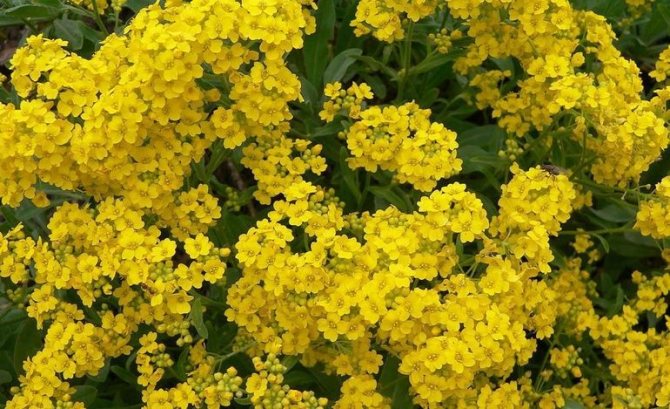

Rudbeckia and Echinacea
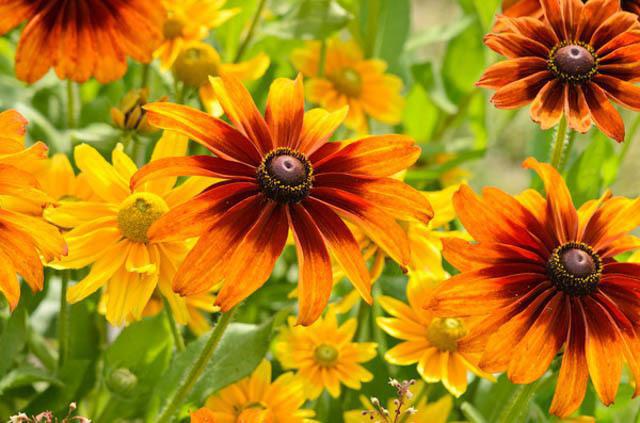

Another chamomile-like flower is rudbeckia. She is a bright accent of the autumn garden and illuminates it with rich, sunny shades. This usually occurs in August and September. The plant grows on average up to 55 cm. And when it begins to bloom, the inflorescences reach 9 cm in diameter. Rudbeckia bushes do not disintegrate, but stand compactly. The core of the plant is dark and convex. The petals are yellow or orange.
Another "friend" of chamomile is echinacea, which is often called rudbeckia, only of a different color. It begins to bloom in the middle of summer and pleases the eyes of the owners until October. The flowers are large enough - 15 cm. Like the rudbeckia, the center is dark and convex. The colors are varied and can be rich red, white and pink.
Flowers with yellow leaves
Plants with leaves of this unusual color always attract attention. They are great for original decoration of the interior of the room. But these flowers, as a rule, need special care: pruning flowers, proper watering, high-quality feeding. Showy flowers with golden leaves include:
- Codiaum (croton) - has a straight stem and large leaves, the length of which sometimes reaches 30 cm. In the catalogs of specialized stores, you can find codiaum with leaves of red, yellow, variegated and other colors. Due to their spectacular appearance, these plants are very popular.
- Dracaena - differs in two-colored leaves: yellow - at the edges and green - in the center. It develops best at this temperature: in the summer - 15-18 ° C, in the winter - 12-15 ° C. Dracaena leaves should be sprayed periodically to prevent drying out. Can grow in one pot for 5-10 years.
Plants with yellow flowers will bring bright colors and good mood to your home. An extensive selection of solar plants will allow the hostess to find her best option or combine different species. At the same time, it is enough to pay only a little attention to flowers, and they will respond with active growth and long flowering.
In the spring, when you really want to raise your vitality and cheer up, the optimistic yellow color and its shades are exactly what you need! Your favorite garden, where "sunny" plants bloom and smell, will become a constant source of inspiration and positive. Choosing Applicants!
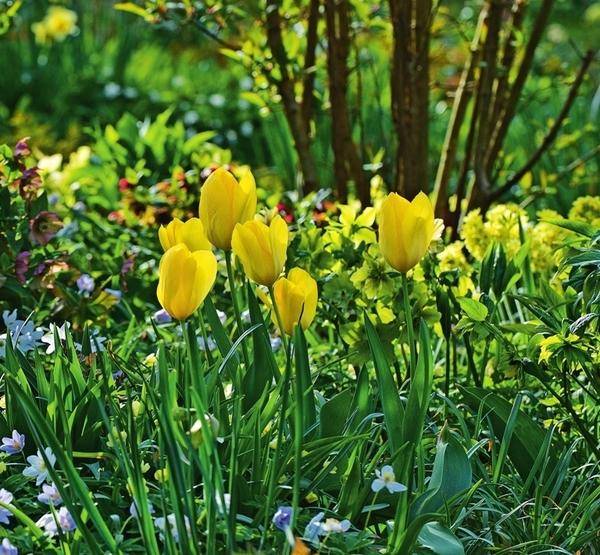

After the monotonous black-and-white panorama, the rich colors in the garden are like a breath of fresh air! And the flowers of a cheerful yellow color seem to be created in order to drive away the winter blues. Already now, you can decorate the glazed balconies (if the spring is early, then the covered terraces) with expelled daffodils transplanted into beautiful baskets or pots, and under the bushes, yellow buds of erantis, or a spring plant, are about to open (read more about the plant in the article Golden Placers of Spring: erantis, or spring men).
Psychologists are sure that yellow is the color of optimism... To be convinced of this, just look at the yellow flowers. Like little suns, they warm, illuminate everything around and cheer you up. After the first heralds of spring in the garden, tulips are rushing to share solar energy, such as the lilac ‘Moonlight Girl’ with elegant light yellow glass flowers, spring primrose, lacfiol, hazel grouses and early flowering shrubs such as gorse and broom.
Tulips, wet with dew, soar above the flower garden. The retinue is played by the spring primrose (Primula veris), the oak anemone (Anemone nemorosa) and hellebores. You can't take your eyes off the bright company!


In May, the imperial hazel grouse (Fritillaria imperialis) ‘Lutea Maxima’ pleases the eye with “bouquets” of yellow bells gathered on a powerful peduncle. The plant of this variety is distinguished by its endurance.
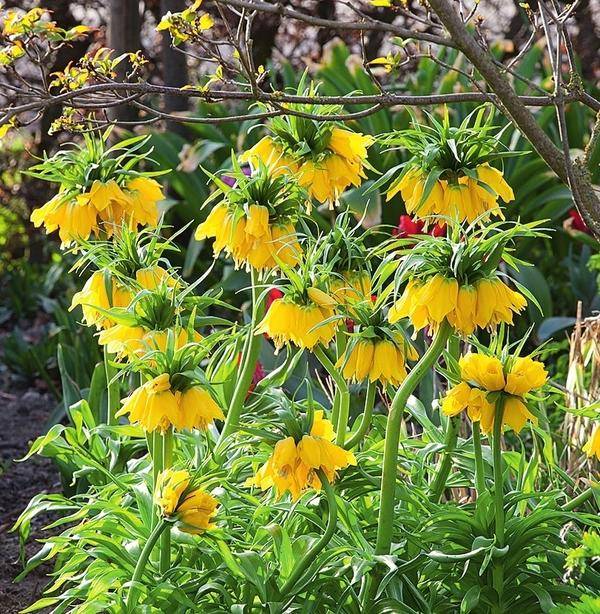

Rod-shaped broom (Cytisus scoparius) begins to bloom at the end of May. Please note: the plant is perfect for terrace decoration! Cut a couple of twigs and braid into a wreath. Do not worry that this will harm the shrub: after flowering, the plant still needs to be cut off.
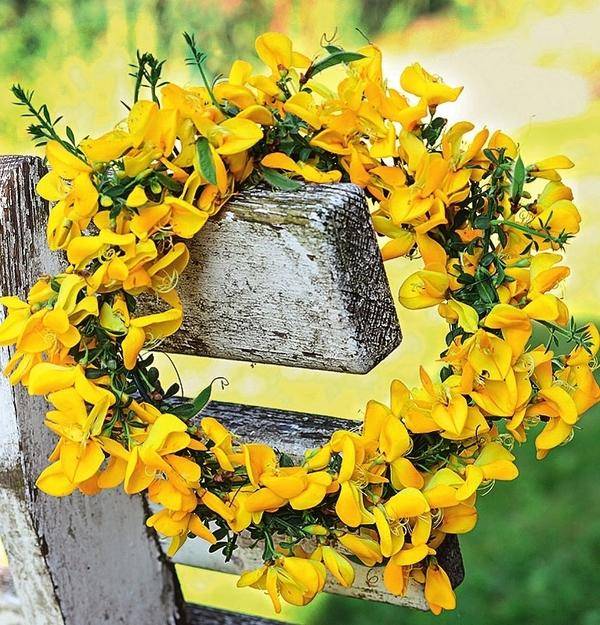

In early summer, lupine, evening primrose (Oenothera) and daylilies (Hemerocallis) pick up the baton.
By the way, have you noticed how many shades of yellow there are? For example:
- Cornigera's spurge (Euphorbia cornigera) ‘Goldener Turm’ and the cuff delight the eye with flowers of a juicy lemon-yellow color scheme,
- ‘Pure Perfection’ daylily decorates plantings with creamy yellow flowers with double petals,
- and the 'Hannelore Pahl' yarrow, in turn, captivates with rich yellow inflorescences-saucers, the color of which fades over time.
Variegated herbaceous perennials will place winning accents in the flower garden: similar to the miniature fountain of the Morrow sedge 'Aureovariegata' or hosts with two-colored yellow-green leaves.
"Sunny" plants are so bright that they are always in the spotlight - whether it is a whole flower garden, an ensemble of potted plants on the terrace or a single shrub, for example, the Vaterer bean.
Left: Stylish pair - Hakonechloa macra 'Aureola' and variegated hosta. So bright that they don't need flower partners. On right: Vaterera bean (Laburnum watereri) ‘Vossii’ looks luxurious in bloom. The brightness of yellow is emphasized by the purple heads of the aftalun onion.
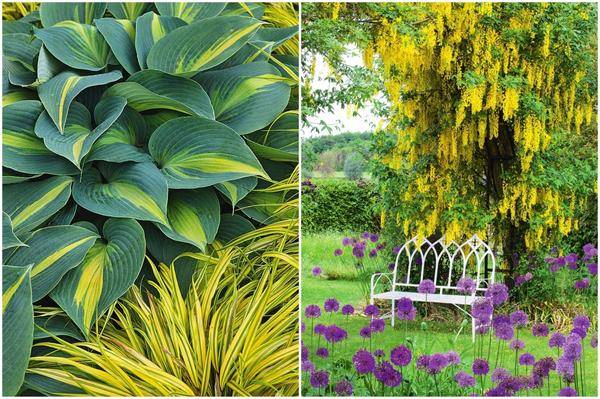

Left: golden-flowered catchment (Aquilegia chrysantha) ‘Yellow Queen’ captivates with lemon-yellow flowers on peduncles up to 70 cm high. On right: yellow flowers with a pink center of the black mullein (Verbascum nigrum) will definitely not go unnoticed. A plant up to 1 m in height blooms from June to August.
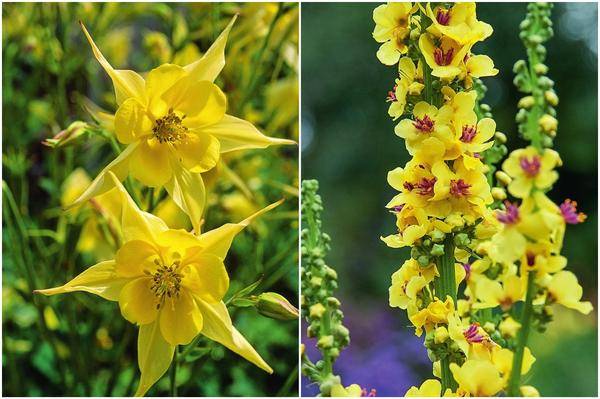

Left: The 'Butterflies' magnolia blooms even before the leaves appear. The tree is low to medium vigor.On right: Japanese kerria (Kerria japonica) blooms as soon as green leaves appear. In the shade, its flowers live longer, retaining an intense color.
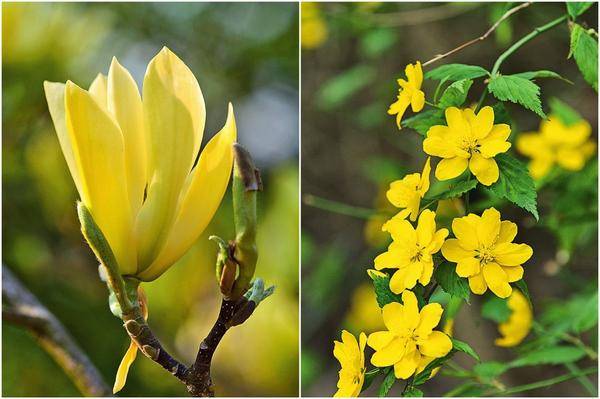

Petunia flowers, replacing each other, flaunt in the garden all summer long.
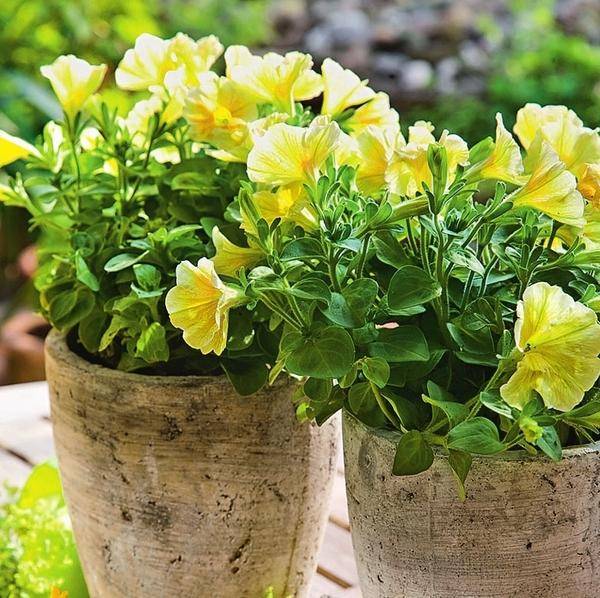

Yellow matches perfectly with silvery gray. Byzantine wormwood, Artemisia absinthium ‘Lambrook Mist’ or Eryngium zabelii ‘Blauer Ritter’ with leaves and stems of silver color will serve as a magnificent frame for our “shining” heroes, giving the flower garden a touch of noble sophistication.
Left: Compared to the silvery gray Stachys byzantina, the 'Credo' yarrow (Achillea) inflorescences look even brighter. On right: Above the "sea" from the cuff, the fragrant "suns" of the inflorescences of Anthemis tinctoria (Anthemis tinctoria) ‘E. C. Buxton '. The latter prefers sun and poor soils with good water permeability. Blooms from June to September.
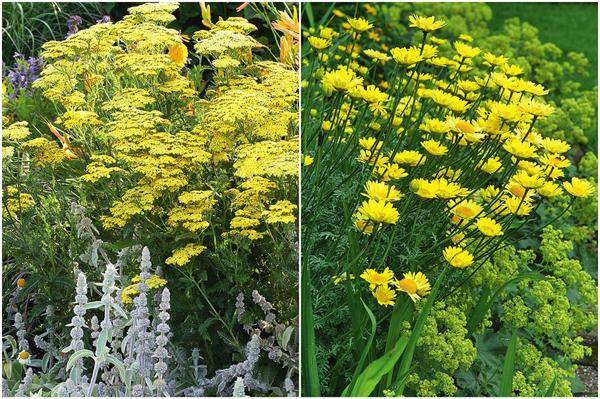

White-headed partners will play a similar role. So, the snow-white buds of Lindheimer's daisy and gaura refresh the yellow plantings, thanks to which they look simply brilliant in the sun. Companions with flowers of complementary violet color produce a completely different effect: they enhance the already bright lemon color.
Which girls are suitable for?
Bright yellow colors will appeal to an incorrigible optimist who looks into the future without anxiety and with curiosity. Such a bride always sees the good side in everything., able to calm and inspire everyone, full of energy and new ideas.


Great for a bright yellow bouquet for swarthy or tanned girls... In contrast to the juicy buds, their skin looks lighter, porcelain.
Sunny shades are versatile and suitable for any season:
- in spring they are in perfect harmony with the fresh greenery of awakening nature;
- in summer they organically complement the heat and color;
- in autumn they fit into the gold and crimson of the surrounding foliage;
- in winter they fill the colorless monochrome with life and brightness.
The yellow bouquet is the perfect solution for a gypsy wedding in boho, rustic, country, eco, Hawaiian styles. We advise you to combine such a bright composition with the same rich tone of the dress, snow-white or colored, but it is better to refuse cream or milk fabrics. They may seem dirty. Do not forget about bright makeup, so that your face is not lost against the background of such a noticeable accessory.
Regardless of the presence or absence of sunburn, you should not be photographed with a yellow bouquet on your face. Flowers will create an unhealthy sheen. Much better juicy inflorescences look against the background of a snow-white dress.


Planting feverfew
Sowing seeds should be done not earlier than April. This is due to the thermophilicity of the flower. At night, it is recommended to cover the plant with a film. This is necessary in order to protect it from possible frost. The seeds are sown at a shallow depth. In this case, it is worth planting them as rarely as possible. When the first shoots appear, it is necessary to break through them. A distance of at least eight centimeters is left between the remaining plants. However, over time, flowers need to be planted at a distance of 40-45 centimeters. Sown in the soil in the spring, feverfew will only bloom the next season.
It is noteworthy that the seeds of this culture are very small in size. Experts recommend mixing them with sand to facilitate the sowing process. However, there is an even simpler method. In this case, the seeds are spread over the surface of the soil mixture, and then sprinkled with the required amount of soil. It is recommended to water crops using a fine-dispersed spray bottle.
Palette
If you do not want a sunny monochrome, then add some auxiliary shades. Since yellow itself is very bright, you should not combine it with more than two other tones, otherwise the overall picture will turn out to be too chaotic.
White-yellow
The traditional combination is yellow and white. Snow-white creates a feeling of solemnity, the beginning of something new, innocence and purity. In a duet with yellow, this color acts as a wish for a family that is being born for well-being at all levels - material, social, spiritual.
It is permissible to add juicy greens. So the picture will turn out to be spring and joyful, and is perfect for a celebration planned for the warm season.
By itself, the combination of yellow and green is also acceptable - it is very natural and calm. In this case, you can not decorate the stem of the bouquet, but simply tie the stems of plants with a ribbon or twine - and an unassuming, but such a captivating bouquet is ready for a rustic or country wedding!
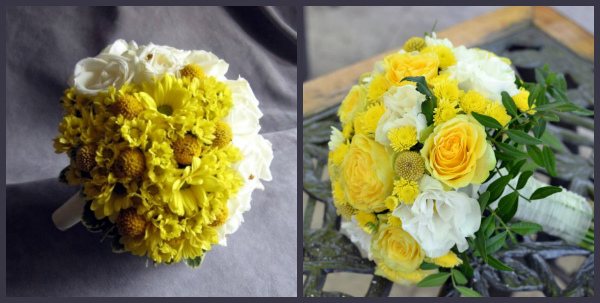

Multicolored
For those who are passionate and sensual, a combination of yellow with red or orange is suitable. An extravagant fiery bouquet looks great in the hands of an autumn girl, as well as at an autumn or winter wedding.
It is permissible to add berries, ears, dried flowers of the desired shades to the composition.
Advice! A rich yellow-red palette must be supported in any detail of the bride's image - hairpin, shoes, belt, makeup.
Other popular combinations:
- combination of yellow with blue, blue or purple suitable for a creative girl at a themed wedding;
- romantic, dreamy natures will like duo of yellow with soft pink;
- if choose fuchsia and similar colors, then the overall picture will turn out to be glamorous and will perfectly fit, for example, into the theme of dandies.
Symbolism


Not so long ago, a bouquet of yellow flowers was considered a bad omen, a symbol of separation, but times are changing, and modern floristry is moving away from this unfair stereotype. Finally, yellow is the color of sunshine, gold and joy. How can such a positive combination carry anything bad?
In psychology, the meaning of golden shades is boiling energy, but not aggressive, as in the case of red, but tuned in to cooperation, creation and mutual understanding.
Important! Yellow keeps you in good shape, allows you to believe in yourself and go to your goal without fear.
Usually, a yellow wedding bouquet is interpreted as a wish to newlyweds for financial and emotional well-being, a large number of children, as well as carefree fun. Lighter colors bring notes of tenderness, trust and respect for each other, while bright ones speak of energy and optimism.
Hibiscus


Terry hibiscus
- The plant is bush, can be up to 3 m long with proper care. It has a lush crown with a smooth trunk. The bark is gray. Trefoil-shaped leaves, large. The inflorescences are voluminous, red and have 5 petals.
- Hibiscus is unpretentious plant. Can easily tolerate drafts and temperature changes. The flower does not disappear without watering. Loves diffused light.
- Pruning needs to be done every year to form a bush, and shoots after flowering also need pruning. Each cut young shoot will give a new flower, the main thing is to do this until the branch is lignified.
- First feeding potash-phosphorus fertilizers are carried out in the spring. Subsequent feeding is carried out during the period of active growth. Hibiscus does not like fertilizers containing nitrogen.
- Young bushes are transplanted annually until the age of three... Soil recipe: peat, sand, garden soil 1: 1: 2. Next, this should be done once every 3 years.
- Hibiscus grown from cuttings and seeds.
Sun King
This is the most popular yellow flower. The name, of course, is known to everyone: it is a sunflower. The plant not only has a high economic value, but also looks very attractive.This huge flower with a high thick leg, the height of a person, certainly attracts the eye and becomes a bright accent on a flower bed or in a vegetable garden. Sunflower is extremely unpretentious to the soil, the main thing is that moisture does not stagnate in it. Short-term droughts will not harm him either: the origin from the hot American prairies affects. This annual is sown directly into the ground, regular watering will help form large flowers. It is advisable to tie the plant up so that strong winds do not break it.
How to make it bloom?
Providing complex and laborious plant care, each grower hopes that they will delight him with bright and long flowering. Usually, if the rules are followed, flowers such as afelandra and calceolaria do not have problems with flowering.
As for Jameson's gerbera, the absence of peduncles can be caused by a number of other reasons:
- a voluminous pot and, as a result, the strength of the flower goes to the development of the roots;
- too tight a pot;
- nitrogenous soil;
- watering and spraying with ice water.
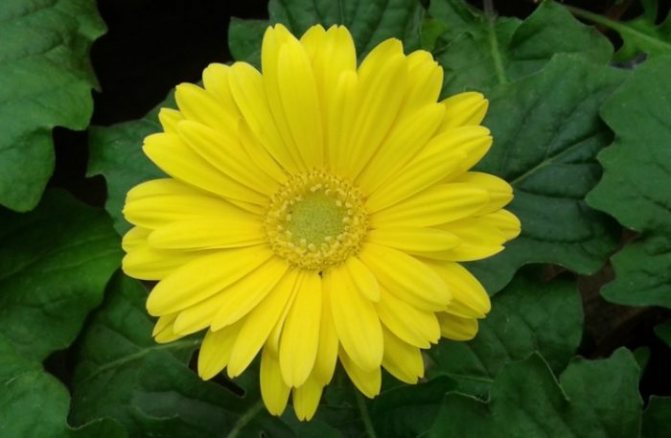

Eliminating these factors helps to achieve the flowering of a given crop.
Attention! The constant flowering of the gerbera leads to a reduction in its life. It is required to periodically arrange periods of calm for the flower.
The benefits of growing flowers
You don't need any special education to grow indoor plants. To do this, you just need to periodically spend a little time and know the rules of care. Flowers with yellow flowers have several advantages:
- Like other plants, they are excellent at purifying the air and helping to improve the well-being of the owners of the house.
- Sunny flowers give a feeling of calmness and comfort. Also, thanks to their bright colors, they add a festive touch to the interior.
- Indoor flowers of this color are considered the defenders of the family hearth, bringing wealth and prosperity. In addition, they bring love and understanding into the home, as they help to eradicate jealousy.
- Unlike cut flowers, indoor plants do not wither after a few days, but are constantly pleasing to the eye, both with spectacular flowering and beautiful leaves.
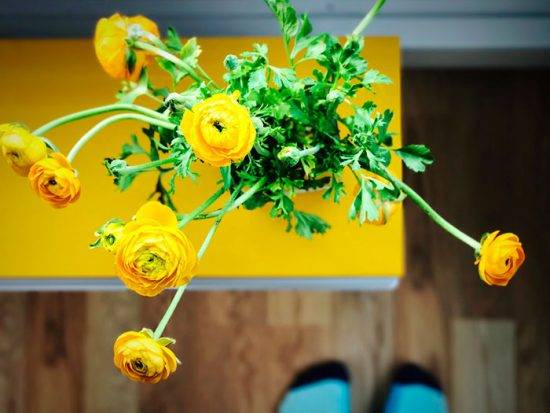

Yellow house flowers pandanus (PANDANUS)
The narrow, spiny-edged pandanus leaves, very similar to pineapple leaves, are arranged around the stem in a spiral. The yellow house flowers pandanus are a slow-growing plant that develops into a spectacular false palm tree more than a meter tall, with a spirally curled trunk and long, arched leaves.
Varieties
Pandanus Veitch (Pandanus veitchii) spreads widely and reaches a height of about 1 m. The jagged edges of the leaves are sharp - keep the plant away from areas where you can accidentally bump the leaves, or grow the compacta variety. P. Baptista (P baptistii) has whole-edge leaves.
Care
Temperature: Moderate - at least 13 ° C in winter.
Shine: Well lit place, protected from direct sunlight in summer.
Watering: Water liberally from spring to fall. Water very sparsely during the winter. Use lukewarm water.
Air humidity: Spray the foliage frequently.
Transfer: Repot every two to three years in the spring.
Propagation: Separate the offspring at the base when they reach a length of 15 cm and root as stem cuttings. Use rooting hormones and substrate warming.

